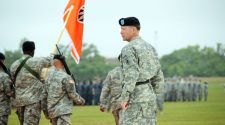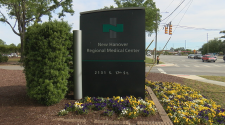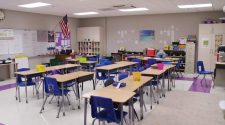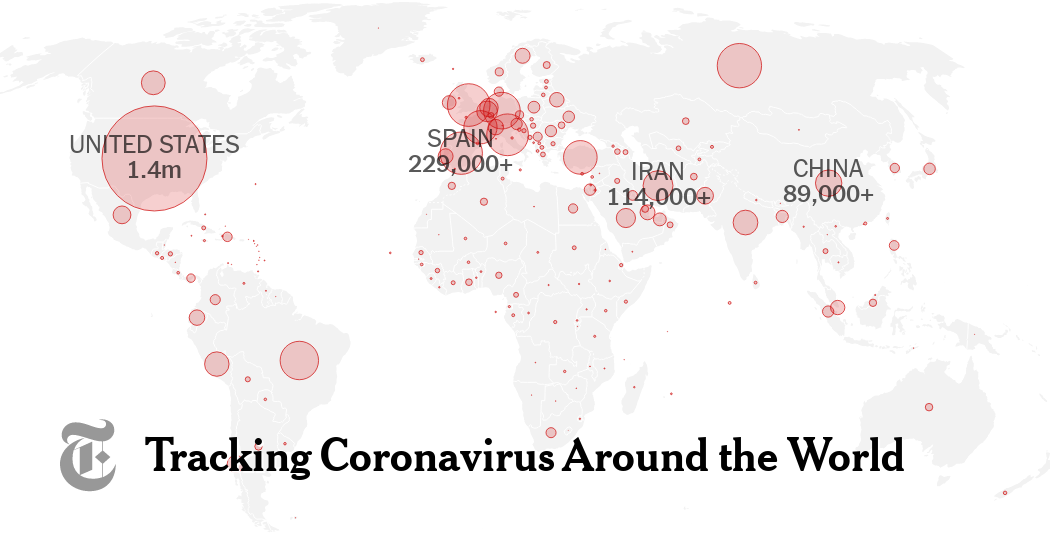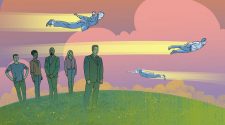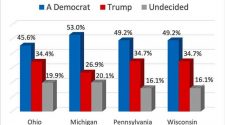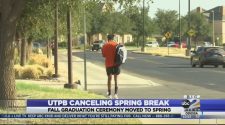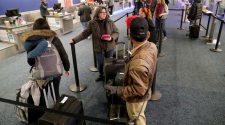As the virus devastates tax revenues, states must follow balanced-budget laws.
In February, Ohio was running a $200 million budget surplus. Then the coronavirus pandemic struck, and two months later — as tax revenue plummeted and public health expenses skyrocketed — the state was facing a $777 million hole.
Gov. Mike DeWine, a Republican, ordered immediate cuts to close the gap. He had no choice. The pandemic, Mr. DeWine said, “does not exempt us from balancing our budget, which we are legally obligated to do.”
Ohio is hardly alone. Every state is grappling with a version of the same problem, and all but one — Vermont — have balanced-budget laws in place. And for most, the new fiscal year starts on July 1, leaving them desperate for help with just a few weeks to come up with a plan.
A coalition of five Democratic governors said on Monday that state and local governments needed $1 trillion in federal relief or they would be forced to decide between funding public health care programs or laying off teachers, police officers and other workers.
Democrats in Washington have supported those requests, but some Republicans — including President Trump — have suggested that Democratic-controlled states are seeking a bailout for poor decisions that predate the pandemic.
The problem is that balanced-budget laws have left states with few options. And the coronavirus adds to the strain every day: Stay-at-home orders and frozen economic activity have cut state sales- and income-tax revenue, and services that are largely unused, like airports and public transit, still must be maintained.
Georgia has instructed all state agencies to reduce spending by 14 percent by May 20. California has already borrowed $348 million, and Gov. Gavin Newsom on Thursday proposed steep cuts to public schools and universities and health care as part of a revised budget.
The new California budget would cut spending by 9 percent over all, but like Mr. DeWine, Mr. Newsom said he had little choice.
“Our state is in an unprecedented emergency, facing massive job losses and shortfalls in record time,” he wrote in a letter to legislators. “This budget reflects that emergency.”
In swing states, reopening deepens the political divide.
In Wisconsin, residents woke up to a state of confusion on Thursday after the conservative majority on the State Supreme Court sided with the Republican majority in the Legislature on Wednesday night, overturning a statewide stay-at-home order by Gov. Tony Evers, a Democrat.
In Michigan, hundreds of protesters, many of them armed, turned out at the State Capitol in a drenching rainstorm. The state closed the building in advance and canceled the legislative session, rather than risk a repeat of an April protest in which angry protesters carrying long guns crowded inside.
In Pennsylvania, some Republican lawmakers urged defiance of the Democratic governor’s orders to keep nonessential businesses closed, and President Trump flew to Allentown for a politically charged visit to a medical supply facility.
The response to the coronavirus in those three states, which determined the 2016 presidential election and could strongly influence the one in November, is becoming a confused and agitated blend of health guidance, protest and partisan politics — leaving residents to fend for themselves.
“My anxiety for this pandemic is not having a unified plan, that we’re all on the same page, and listening to science and the same rules,” said Jamie O’Brien, 40, who owns a hair salon in Madison, Wis., that remains closed because of a local stay-at-home order.
Across Wisconsin, the court ruling left some residents in a festive mood, heading directly to one of the state’s many taverns to celebrate. Others were determined to stay home, worried that it was too soon to return to crowded restaurants and shops.
“You have the one group that’s like, ‘Yay!’” said Patty Schachtner, a Democratic state senator from western Wisconsin. “And the other group is like, ‘Man, life just got complicated.’”
It was an unsettling microcosm of a country increasingly unable to separate bitter political divisions from plans to battle a deadly disease. Democratic governors in Wisconsin, Michigan and Pennsylvania, backed by public health experts, have urged caution before reopening. Republican legislatures in the states have pushed in the opposite direction, citing economic necessity and personal freedom.
The C.D.C. releases checklists for schools and businesses seeking to reopen.
The Centers for Disease Control and Prevention on Thursday released six flow charts meant to help schools, restaurants, transit systems and other businesses decide when to reopen during the coronavirus pandemic, the agency’s first release of such guidance after a more comprehensive draft was rejected by the White House.
The decision trees are mostly composed of basic tips that can serve as a checklist for businesses before they reopen. In the slide for restaurants and bars, the C.D.C. says the establishments should feel comfortable opening if they do not violate local laws, promote good hygiene, increase cleaning, encourage social distancing and institute lenient sick leave policies, among other suggestions.
The public release of the guidance follows a tumultuous back-and-forth between the C.D.C. and the White House. Trump administration officials had sent back the C.D.C.’s initial recommendations, arguing that they were too prescriptive and rigid when the density of confirmed coronavirus cases can fluctuate widely from state to state, and even county to county. Some federal agencies also said the draft guidelines could harm businesses and the economy.
Notably absent from the six decision trees released on Thursday was any mention of houses of worship, which had been a particularly contentious point in the C.D.C. guidance that was rejected. A draft of that guidance encouraged all congregants to wear masks and suggested religious institutions suspend the use of any “choir or music ensemble.”
A C.D.C. spokesman said that further decision charts may be issued, and that the ones that were released emphasized the need for employers to work closely with local health officials.
But the simple slides, which include arrows, stop sign graphics and links to further resources, could still aid principals, employers and others faced with tough decisions about whether to reopen. Nearly every state has eased restrictions on some businesses.
The White House threatens to veto a $3 trillion relief bill.
The White House threatened to veto a $3 trillion pandemic relief bill that Democrats planned to push through the House on Friday, as Republicans urged their members to reject a measure they said was a nonstarter.
On a day when the two-month tally of jobless claims reached 36.5 million, the statement hinted at what Republican leaders and White House officials have suggested in recent days: That they are not certain additional economic aid measures will be needed, and that any such measure should be centered on tax cuts and liability protections for businesses.
House Republican leaders urged their members to vote against the legislation, saying, “Neither this bill nor anything like it will ever become law.”
Even as they prepared to muscle it through the House, Democrats were making last-minute revisions to the bill, including a provision to bar nonprofit organizations that had engaged in election activities, such as contributing to a political campaign, from receiving loans. They also added language ordering a study to examine the role of virus-related disinformation in the public’s response to the pandemic.
The virus killed a police officer. His town lined the streets to mourn him.
For three weeks, a small town in northern New Jersey kept vigil over Officer Charles Roberts.
Everyone in Glen Ridge knew Mr. Roberts, or at least had a story about him. He was the officer they saw in the morning at Starbucks, the one who secured their new car seats into back seats, the one who remembered their children’s names from school, where his wife was a teacher and where Mr. Roberts, 45, was an officer in the drug education program.
Since he had collapsed at home in April, they had prayed for him and placed signs on their doors, windows and lawns that read “#ROBSTRONG.”
On Thursday, three days after he died from complications of the coronavirus, the people of Glen Ridge, which is about 20 miles west of New York City, paid him one last honor.
With no central gathering spot available because of the state’s lockdown orders, they filed out of their homes by the hundreds and stood on their porches, front yards and sidewalks. They placed their hands over their hearts as the hearse carrying his body made its way to the cemetery. Many wore blue and orange — the colors of the New York Mets, Mr. Roberts’s favorite baseball team — and saluted as the hearse drove by, escorted by dozens of police cars and motorcycles from nearby towns and cities.
“He’s just truly the poster image of what a Norman Rockwell police officer looks like,” said Joseph Uliano, a fellow officer in the Glen Ridge Police Department, referring to the famous painting of a police officer chatting with a small child at a soda shop. “If there was a 2020 version of that poster, it would be Rob sitting at that counter with that little boy.”
Even talking can propel the droplets that spread the virus, a study suggests.
Coughs or sneezes may not be the only way people transmit infectious pathogens like the coronavirus to one another. Talking can also propel thousands of droplets so small they can remain suspended in the air for eight to 14 minutes, according to a new study.
The study’s experimental conditions would need to be replicated in more real-world circumstances, and researchers still do not know how much virus has to be transmitted from one person to another to cause infection. But its findings strengthen the case for wearing masks and taking other precautions to reduce the spread of the virus.
The F.D.A. says a test used by the White House may produce false negatives.
The Food and Drug Administration said on Thursday night that a coronavirus test used by the White House to screen staff members and visitors may not be accurate.
In an unusual public notice, the agency said that early data suggested the Abbott ID Now test, hailed as a rapid test to diagnose infection with the virus, may return false negatives in patients who actually are infected.
“This test can still be used and can correctly identify many positive cases in minutes,” said Dr. Tim Stenzel, director of the F.D.A.’s Office of In Vitro Diagnostics and Radiological Health.
But negative results should be confirmed with another high-sensitivity test, he added.
The product, which was given emergency authorization by the F.D.A. in late March, has been enthusiastically promoted by President Trump — it was even used as a prop during at least one news conference. Mr. Trump has said the tests are “highly accurate.”
The agency’s warning follows a study by researchers at N.Y.U. Langone Health that found the test could miss infections up to 48 percent of the time.
The F.D.A. also said it had received 15 so-called “adverse event reports” about Abbott’s device, suggesting some users were receiving false negatives. The agency said it was continuing to evaluate the test.
In a statement to investors on Thursday night, Abbott defended the ID Now test, calling it reliable when used as intended. “Negative test results should be considered in the context of a patient’s recent exposures, history and the presence of clinical signs and symptoms consistent with Covid-19,” the statement said.
If the negative results are inconsistent with signs and symptoms, Abbott said, patients should be given an alternative test.
Honolulu extends its stay-at-home order but loosens the restrictions.
On the island of Oahu, where the Honolulu city and county government are consolidated, recreational facilities will also reopen on Friday for some one-on-one exercise, and drive-in religious services will be allowed, Kirk Caldwell, the mayor, said during a news conference on Thursday.
Mr. Caldwell said Honolulu officials were also examining a June 5 reopening for restaurants, which have been limited to takeout and delivery.
“We’re being very cautious here,” Mr. Caldwell said.
Retail and repair businesses, real estate services, car dealerships, florists, mobile pet groomers and golf courses may reopen on Friday but must abide by social distancing rules. Occupancy at retail shops will be limited.
Mr. Caldwell said he would also seek approval from the state to reopen beaches on Oahu after the island of Kauai was allowed to do so on Wednesday. “We’d ask that you’d be at least six feet away from the next person who may be lying in the sun,” he said.`
After 36.5 million jobless claims in two months, there are calls to cover wages.
The weekly count of new claims has been declining since late March, but that hopeful flicker barely stands out in an otherwise grim economic landscape.
And despite attempts by states to keep up with the onslaught of claims, many workers are supremely frustrated, either by their inability to submit applications or by payment delays.
In places where the fitful process of reopening has started, workers who have been called back to their jobs often face reduced hours and paychecks as well as heightened risk of infection. Declining to return, however — whether because of health concerns or the need to care for children while schools are closed — is likely to put an end to any jobless benefits.
“It’s a very tough choice for those in the service industry and those at the lower end of the pay scale,” said Rubeela Farooqi, the chief U.S. economist at High Frequency Economics. “Do you go back and risk getting sick, or have no money coming in?”
As job losses mounted, two ideologically opposed lawmakers came to the same conclusion: It is time for the federal government to cover workers’ salaries.
Representative Pramila Jayapal, a progressive Democrat from Washington, and Senator Josh Hawley, a conservative Republican from Missouri, are making the case to their parties’ leaders that guaranteed income programs should be part of the federal relief effort.
Some young adults with the virus are having strokes.
Neurologists in New York City, Michigan, New Jersey and other parts of the country have reported a flurry of cases in which young, otherwise healthy adults have had strokes. Many are now convinced that unexplained episodes are yet another insidious manifestation of Covid-19.
Though the strokes may be rare, they can have catastrophic consequences, including cognitive impairment, physical disability and even death.
“We’re seeing a startling number of young people who had a minor cough or no recollection of viral symptoms at all, and they’re self-isolating at home like they’re supposed to — and they have a sudden stroke,” said Dr. Adam Dmytriw, a University of Toronto radiologist who is one of the authors of a paper describing a series of patients who had strokes related to Covid-19.
For some of these patients, a stroke was the first symptom of a viral infection. They put off going to the emergency room because they did not want to be exposed to the virus.
“If you don’t get help, you risk being permanently disabled and needing long-term care,” said Dr. Johanna Fifi, a neurologist at Mount Sinai Health System in New York. “It’s not going to go away on its own.”
A Texas court rules against the state’s attorney general, extending voting by mail.
A Texas appeals court ruled against the state’s attorney general on Thursday and allowed voters who feared getting infected by the virus to cast mail-in ballots instead of showing up at the polls.
At issue are rules for casting mail-in ballots and whether healthy voters who fear contracting the virus at the polls qualify for such ballots as disabled voters. The Texas Democratic Party, voting rights groups and others who sued the state say they do. But the Republican attorney general, Ken Paxton, has said that the election code “does not permit an otherwise healthy person to vote by mail merely because going to the polls carries some risk to public health.”
In a separate legal move on Wednesday, Mr. Paxton asked the Texas Supreme Court to order officials in five counties to stop encouraging voters to apply to vote by mail if they feared contracting the virus.
In the latest ruling on Thursday, the state’s Fourteenth Court of Appeals upheld a lower court order issued last month. In that order, a judge found that voting in person during the pandemic presented a likelihood of injuring a voter’s health, and that “any voters without established immunity meet the plain language definition of disability” and were entitled to mail in their ballots.
A whistle-blower says ‘lives were lost’ because the government ignored warnings.
The whistle-blower who was ousted as head of a federal medical research agency charged on Thursday that top Trump administration officials failed to heed his early warnings to stock up on masks and other supplies to combat the coronavirus, and Americans died as a result.
“Lives were endangered and I believe lives were lost,” Dr. Rick Bright, who was removed in April as the director of the Department of Health and Human Services’s Biomedical Advanced Research and Development Agency, told a House subcommittee. “The window is closing to address this pandemic.”
Throughout nearly four hours of testimony, Dr. Bright told lawmakers on a House health subcommittee that the outbreak would “get worse and be prolonged” if the United States did not swiftly develop a national testing strategy and predicted vaccine shortages if the administration did not draft a distribution plan now.
After holding back for nearly a month, President Trump and his health secretary, Alex M. Azar II, hit back at Dr. Bright, elevating the confrontation. Mr. Trump dismissed Dr. Bright as a “disgruntled employee” while Mr. Azar insisted officials followed through on the scientist’s ideas.
“Everything he was complaining about was achieved,” Mr. Azar told reporters as he and Mr. Trump were preparing to board the presidential helicopter to leave for Allentown, Pa. “What he talked about was done.”
“This is like someone who was in choir trying to say he was a soloist back then,” Mr. Azar continued, adding, “His allegations do not hold water. They do not hold water.”
Dr. Bright’s testimony was the first time that a federal scientist — or any federal official — had gone before Congress and openly accused the administration of endangering American lives by bungling its coronavirus response. He said Americans would face “the darkest winter in modern history” if the administration did move quickly, as people become “restless” to leave their homes.
Changes in New York: Five counties will open, and Broadway’s ‘Frozen’ will close.
In New York, a five-county, central area has met the criteria to begin reopening some businesses this weekend, Gov. Andrew M. Cuomo said. Another 157 deaths were reported, the fourth straight day the figure was below 200.
State officials are now investigating 110 cases of a potentially life-threatening pediatric inflammatory syndrome that appears to be related to the virus and has so far been linked to three children’s deaths. Cases have been reported in other states, including California, Louisiana and Mississippi.
“Frozen” had been the weakest of the three Disney musicals that had been running on Broadway — the others were “The Lion King” and “Aladdin” — but the decision to close it came earlier than anticipated. The move is a reminder that the pandemic is likely to alter the theatrical landscape, forcing producers to reassess the financial viability of long-planned projects because of expected challenges attracting audiences and investors.
California’s public universities, schools and health care providers face steep budget cuts, the governor says.
Gov. Gavin Newsom of California proposed steep cuts to public schools and universities and health care among other programs as part of a revised state budget announced Thursday that reflected the sudden loss of income brought on by the pandemic.
The budget slashes spending by nine percent overall from the initial proposal the governor made in January.
“Our state is in an unprecedented emergency, facing massive job losses and shortfalls in record time,” he said in a letter to legislators. “This budget reflects that emergency.”
To cushion the blow of a projected 22 percent decline in revenue, the governor proposed drawing down the state’s so-called rainy day reserves of $16 billion over the next three years.
The $203.3 billion proposed budget, if approved by the Legislature, would bring spending back to around 2018 levels. But it would still be well above the levels seen during the Great Recession a decade ago.
Mr. Newsom said he would begin negotiating with unions to reduce the salaries of state employees by 10 percent. The pay cuts would include the governor and his staff. “We recognize these cuts are devastating to so many people,” he said.
Many of the proposed cuts could be canceled if the federal government agreed to additional assistance, the governor said. “The federal government, we need you,” Mr. Newsom said.
The revised budget also scratched more than $80 million that Mr. Newsom had allotted in January to expand the state’s version of Medicaid to undocumented people age 65 and over. The expansion, promised last year to progressives and the Legislature’s Latino caucus, had been a priority in the Legislature this year.
Mr. Newsom’s administration is projecting a nine percent drop in overall economic activity because of the crisis, according to the governor’s cabinet secretary. The state is also projecting that unemployment will peak at 25 percent this quarter, she said.
Experts warn of a long struggle ahead and a virus that ‘may never go away.’
The cautions came from all corners but pointed in one direction: The struggle against the virus would be long and the economic consequences lasting.
“It is important to put this on the table: This virus may become just another endemic virus in our communities, and this virus may never go away,” said Mike Ryan, the head of the W.H.O. emergency response team.
“I think we better be careful, if we are not cavalier, in thinking that children are completely immune to the deleterious effects,” Dr. Fauci said. “Children in general do much, much better than adults and the elderly and particularly those with underlying conditions. But I am very careful and hopefully humble in knowing that I don’t know everything about this disease. And that’s why I’m very reserved in making broad predictions.”
The warnings, like so many aspects of the response to the crisis in America, were quickly swept up in dysfunctional political discourse and variously disputed, distorted or dismissed — including by Mr. Trump himself.
The president, whose administration is forecasting a rapid economic rebound as it pushes states to ease restrictions on public life, pressed to reopen the country’s schools and criticized Dr. Fauci’s testimony.
“I totally disagree with him on schools,” Mr. Trump said in an interview on Fox Business on Thursday morning. “And we will have, I call them embers. I call them spikes. And he called — I noticed he used the word spike. Well, you might have that, and we’ll put it out.”
Mr. Trump also said he expected a vaccine to be available by the end of the year, a timeline health experts have advised is unlikely. He also said the military would help with the distribution.
“Our military is now being mobilized, so at the end of the year, we’re going to be able to give it to a lot of people very, very rapidly,” Mr. Trump said without providing specifics.
Just as in a natural disaster like a hurricane, in a public health emergency, the military can be authorized to provide assistance in areas such as distributing supplies and logistics.
The White House press secretary, Kayleigh McEnany, said Thursday on “CBS This Morning” that the president still had confidence in Dr. Fauci but that they were “on opposite sides of the equation” when it came to the reopening schools. Mr. Trump takes the advice of several medical experts before making his own decisions, she said. “He makes the best decision based on the data presented to him,” Ms. McEnany said.
Trump wants schools to reopen. ‘I’m waiting for Dr. Fauci,’ the head of the largest teachers’ union says.
The leaders of the nation’s largest teachers’ union and parent volunteer organization pushed back on Mr. Trump’s efforts to reopen schools, saying only one official could reassure them that it was safe to welcome millions of students back.
“I’m waiting for Dr. Fauci,” Lily Eskelsen García, the president of the National Education Association, said Thursday on a call with reporters. “I’m waiting not for a politician; I’m waiting for a medical, infectious-disease professional to say, ‘Now we can do it, under these circumstances.’”
Ms. Eskelsen García joined educators and members of the National P.T.A. a day after Mr. Trump had rebuked Dr. Fauci for expressing caution about reopening schools. Dr. Fauci told a Senate panel on Tuesday that a vaccine for the virus would almost certainly not be ready in time for the new school year. “We better be careful, if we are not cavalier, in thinking that children are completely immune to the deleterious effects,” he said.
Dr. Fauci’s testimony irritated Mr. Trump, who believes that reopening schools is critical to restarting the economy and to his re-election campaign. “I totally disagree with him on schools,” Mr. Trump said Thursday in an interview on Fox Business.
School leaders are bracing for severe budget cuts, as they anticipate large new expenses for additional staff members and protective equipment to help mitigate the spread of the virus.
When is it safe to go back to the gym?
After a forced period of inactivity, many are wondering whether it is wise to return to shared exercise bikes, weights and treadmills. Public athletic facilities tend to be breeding grounds for germs. But there are things you can do to mitigate the risk of infection if you want to get a workout in.
Keep up with our correspondents around the world.
A powerful typhoon hit the Philippines, complicating its virus battle. The U.N. confirmed the first cases in crowded refugee camps for Rohingya Muslims in Bangladesh. And Yemen is now ravaged by the pandemic, too.
Reporting was contributed by Mike Baker, Kim Barker, Karen Barrow, Pam Belluck, Katie Benner, Alan Blinder, Nicholas Bogel-Burroughs, Julie Bosman, Emily Cochrane, Patricia Cohen, Michael Cooper, Maria Cramer, Catie Edmondson, Nicholas Fandos, Manny Fernandez, Thomas Fuller, Trip Gabriel, Michael Gold, Abby Goodnough, Kathleen Gray, Erica L. Green, Amy Julia Harris, Rachel L. Harris, Tiffany Hsu, Shawn Hubler, Sheila Kaplan, Patricia Mazzei, Jesse McKinley, David Montgomery, Kay Nolan, Azi Paybarah, Roni Caryn Rabin, Katie Rogers, Marc Santora, Knvul Sheikh, Sheryl Gay Stolberg, Eileen Sullivan, Lisa Tarchak and Neil Vigdor.


